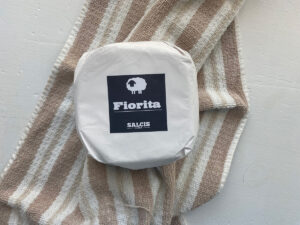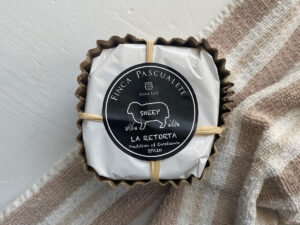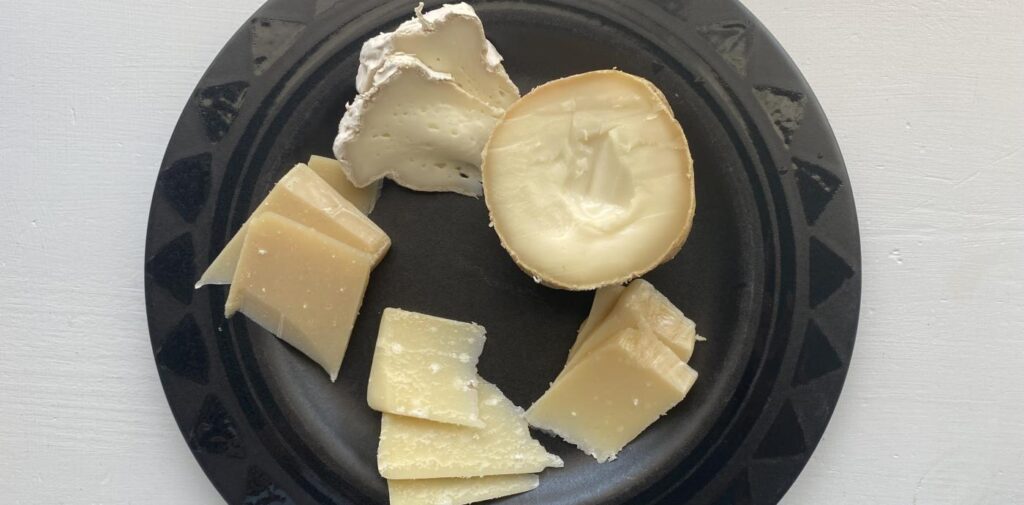
 Since COVID, the Oldways staff hasn’t been able to be together as often, so we’ve organized a variety of activities over zoom. We’ve had wine and cheese tastings – and earlier this month, we enjoyed another virtual cheese tasting by one of our Oldways Cheese Coalition members, Rogers Collection.
Since COVID, the Oldways staff hasn’t been able to be together as often, so we’ve organized a variety of activities over zoom. We’ve had wine and cheese tastings – and earlier this month, we enjoyed another virtual cheese tasting by one of our Oldways Cheese Coalition members, Rogers Collection.
The tasting was a great learning opportunity, and of course, it was fun and delicious. We also appreciated the chance to learn from and support a like-minded company that uplifts producers who are passionate about sustainable, traditional, and authentic cheesemaking practices.
We tasted and talked about five different cheeses, each with their own unique story and characteristics.
We began with this bloomy soft-ripened cheese with an edible rind from Siena, Tuscany. It is comparable to a camembert or brie and has a bouncy, almost marshmallow-like texture and a sweet bready aroma, similar to brioche. A very accessible and versatile cheese due to its smooth and mild flavor, it can be enjoyed in many ways!
MonnaLisa Fiorita (meaning “flourish” or “flower”) is named for the edible flourishing rind of this type of cheese. This is part of a Piedmont tradition that makes a milder version of the Tuscan sheep’s milk white mold rind. For Fiorita, the rennet is added to the milk, after pasteurization. The resulting curd is cut into large pieces to help retain moisture and is transferred into forms, which are then hand-turned multiple times to induce the whey to exit. The forms are sprayed with an aqueous suspension of Penicillium camemberti which, during the short curing, contributes to the formation of a foamy layer of white. Under this white surface of silky white edible mold, there is a delicate sweet taste, balanced with the cheese’s soft texture.
We then tried three variations of a cheese we all know and love — Parmigiano Reggiano!
Rogers Collection imports Parmigiano Reggiano from all three ancient breeds: Valserena Brown cow, Grana d’Oro Red cow and Rosola White cow. All three are made with raw milk and aged 24 months – which is double the required standard by the Consorzio for Parmigiano Reggiano.
The brown cow offers a harmoniously balanced milk with high nutritional benefits. The red cow, often acknowledged as the “mother breed of Parmigiano Reggiano,” lends a sweetness to the cheese. The white cow has a great fat content to protein index ratio (and fruitful flavor!).
Grana d’Oro Red Cow Parmigiano Reggiano DOP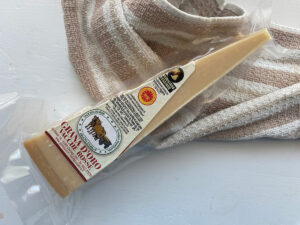
The first Parmigiano Reggiano we tasted was Grana d’Oro Red Cow.
For over three generations, the Catellani family has been producing Parmigiano Reggiano on their single full-cycle farm – all the breeding, feeding, growing, and cheesemaking happens on the same site. They have 180 Red Cows (Vacche Rosse) and have been committed to preserving this ancient breed (which was once at risk of extinction). They are credited with creating the Red Cow DOP Consortium to protect the breed. Red Cow Parmigiano Reggiano is marked with the only two authorized Red Cow stamps.
Valserena Brown Cow Parmigiano Reggiano DOP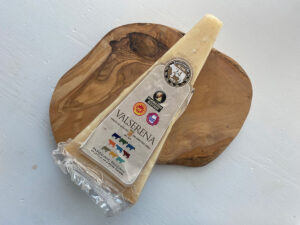
Valserena is extra special to us because we have been lucky enough to visit the beautiful family-run farm on several Oldways culinarias – most recently in Parma this past September.
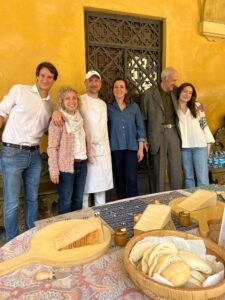 The oldest Parmigiano Reggiano dairy in Parma and one of only four members of the Consorzio di Sola Bruna (Brown Cow Consortium). Valserena is a 5th generation producer operated today by Giovanni Serra and his sister Antoinetta – who is a veterinarian and knows each cow by name. Valserena is one of the last farmstead producers of this PDO cheese, meaning they grow the feed, raise the animals, and make these cheese all at their farm.
The oldest Parmigiano Reggiano dairy in Parma and one of only four members of the Consorzio di Sola Bruna (Brown Cow Consortium). Valserena is a 5th generation producer operated today by Giovanni Serra and his sister Antoinetta – who is a veterinarian and knows each cow by name. Valserena is one of the last farmstead producers of this PDO cheese, meaning they grow the feed, raise the animals, and make these cheese all at their farm.
Rosola White Cow Parmigiano Reggiano DOP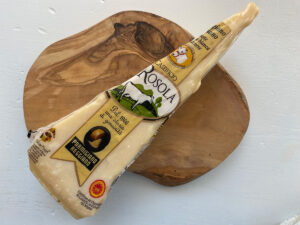
Caseificio Rosola di Zocca is a seven-member cooperative of small farms that use a five-year rotation of meadow pasture to maintain a biodiversity of feed that gives strong mountain meadow essence to the milk. Each farm produces two White Cow wheels each day. The White Modenese Cow milk is particularly suitable for cheese making. Not only does it have an excellent fat content and to protein index ratio, the high frequency of the K-casein gene B makes it easier to process during the complex preparation that leads to the creation of Parmigiano Reggiano.
This cheese was deeply savory and comforting, like buttered noodles! We were very lucky to taste this cheese, because only 1-2 wheels are made per day. Since there are so few white cows left, the production of this cheese is truly a group effort between the farmers in the cooperative.
We finished off with the bold Retorta! It is made with 100 percent raw sheep’s milk and thistle rennet.
This cheese has the most “Hollywood movie” origin story, as detailed on the Rogers Collection website: In the late 1940, Luis Figueroa y Pérez de Guzmán el Bueno, Count of Quintanilla, met a young American woman, Aline Griffith, who turned out to be a CIA agent. Aline fell in love with the Count, but also with the rich history and incredible beauty of the Finca estate (just one of the Count’s possessions). After their marriage, Aline dedicated her life to preserving the culture and tradition by producing premium artisanal farm products.
If you like funky, gooey cheeses – this one is for you. Cut off the top and enjoy with a spoon!
Altogether, this was a delicious selection of special cheeses created, shared, and presented to the Oldways staff by people who are truly passionate about preserving sustainable traditions and “the old ways.”
Italicized text is credited to RogersCollection.us
Special thanks to Carrie Blakeman, Lydia Burns, and Jen Bonaccorsi from Rogers Collection.


